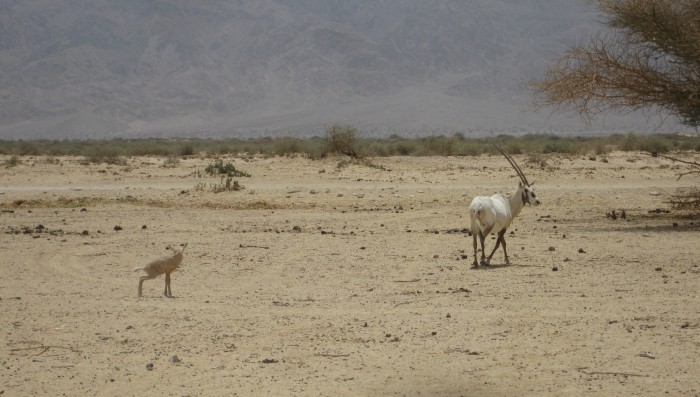By Sam Williams – reposted with author permission from Word Parrot Trust A few Mondays ago we got a call that another parrot had bounced off a car. Normally we’d expect a parakeet, a broken wing or both but this call came from Jim and Jane who sponsor Echo so it was definitely going to...
Category: Featured
Scenes from Hai Bar Yotvata
By Karen Tannenbaum Karen is a California rehabilitator who usually volunteers at the Wetlands & Wildlife Care Center in the US but is spending the summer as a volunteer at an Israeli wildlife rehabilitation and education center, Hai Bar Yotvata. Since IWRC currently has no Israeli members (hopefully we will soon) I thought the membership...
Promising treatment of avipoxvirus infections
Here is an interesting paper for those of you dealing with avian patients. The study was presented at the 2011 Conference of the European Association of Avian Veterinarians. * * * * * A clinical trial of 162 captive birds of prey with poxvirus took place between 2008 and 2010. The Poxvirus infection was diagnosed...
Desert Habitats
By Karen Tannenbaum 6/6 These last few working days I learned more about the Common Tortoise breeding/rehabilitation program, one of the Hai Bar’s most successful projects. My responsibilities now include maintaining enclosures for the youngest tortoises on the reserve, one of the red foxes, raptors in recovery cages, a few recovering small mammals, the nightjars,...
It’s Time to Get the Lead Out for Wildlife
Guest Blog Post from Jeff Miller, Center for Biological Diversity Have you ever held an eagle or loon that’s been poisoned by lead? It’s heart-breaking to see these majestic birds wracked by toxins that sicken and often kill. Veterinarians and wildlife rehab centers have been on the front lines for years coping with countless wildlife...
Bye Bye Buzzard
By Karen Tannenbaum Karen is a California rehabilitator who usually volunteers at the Wetlands & Wildlife Care Center in the US but is spending the summer as a volunteer at an Israeli wildlife rehabilitation and education center, Hai Bar Yotvata. Since IWRC currently has no Israeli members (hopefully we will soon) I thought the membership...
An American in Israel
By Karen Tannenbaum Karen is a California rehabilitator who usually volunteers at the Wetlands & Wildlife Care Center in the US but is spending the summer as a volunteer at an Israeli wildlife rehabilitation and education center, Hai Bar Yotvata. Since IWRC currently has no Israeli members (hopefully we will soon) I thought the...
Bringing Science and Collaboration into Wildlife Health Management
National Wildlife Health Center Strategic Science Plan http://www.nwhc.usgs.gov/information_desk/NWHC%20Strategic%20Science%20Plan.pdf By Kristin Madden, IWRC instructor and Chair of The Wildlife Society’s Wildlife Disease Working Group subcommittee to review the NWHC Plan In February 2012, a subcommittee of The Wildlife Society’s Wildlife Disease Working Group was formed to review and comment on the U.S. Geological Survey’s National...
Up For Discussion – Nonnative Species
Up For Discussion The upcoming issue of JWR will feature a Letter to the Editor questioning the ethics of treating and releasing non-native, invasive species. In this particular case, the species in question is Virginia opossums in California (introduced in 1910, according to Jameson & Peeters (California Mammals, University of California Press, 1988)). But...
Attending the 11th International Effects of Oil on Wildlife Conference
By Susan Wylie, IWRC Board Member Last month I attended the 11th International Effects of Oil on Wildlife conference in New Orleans, Louisiana. This conference was attended by a variety of professionals including government agencies, wildlife rehabilitators, veterinarians, biologists, researchers and oil response companies. With oil spills occurring more frequently around the globe, I attended...

